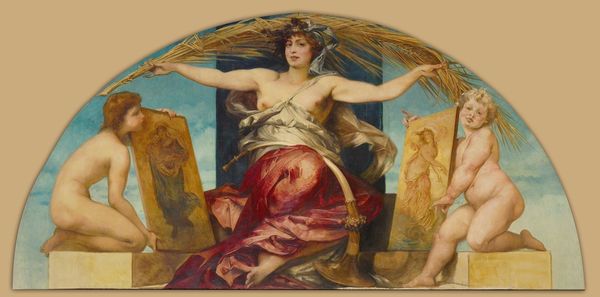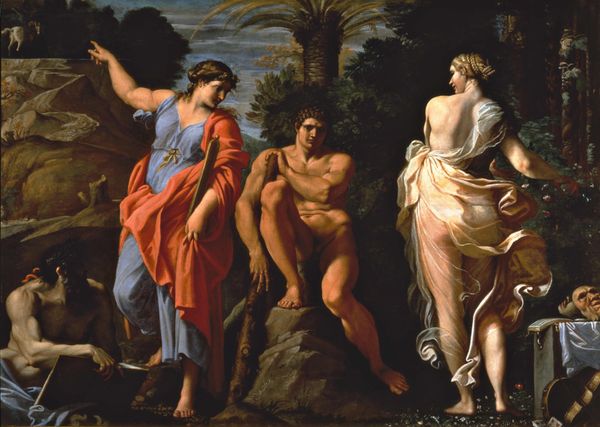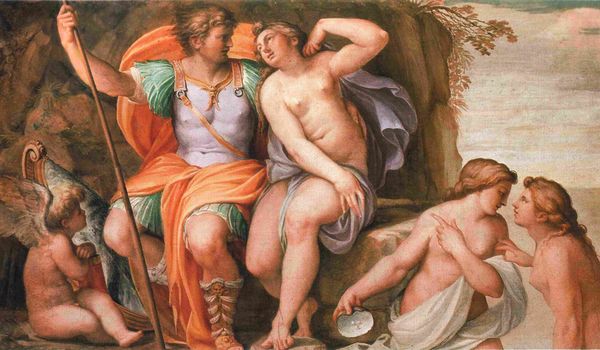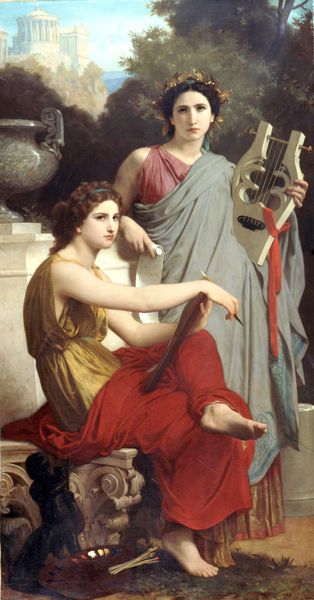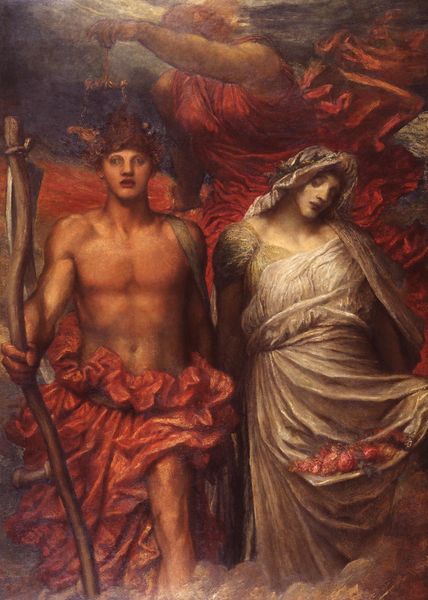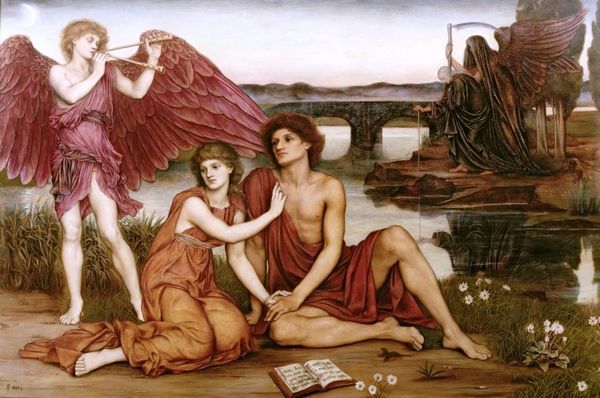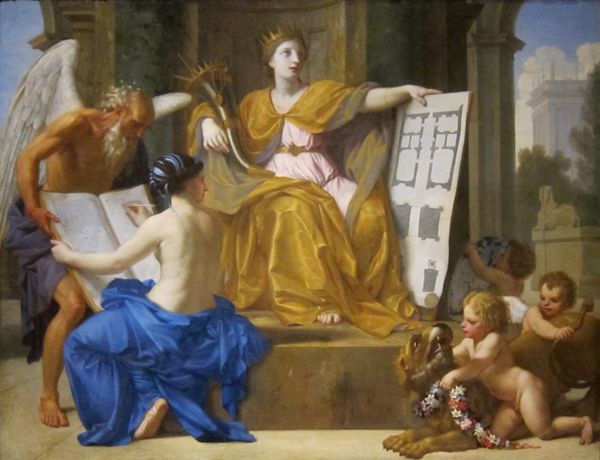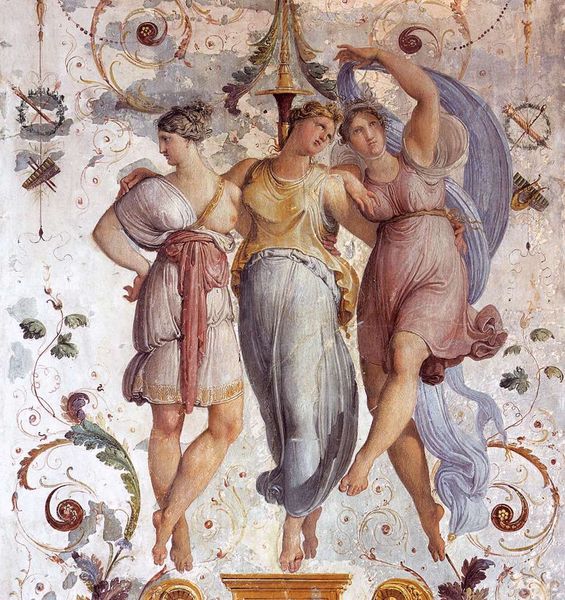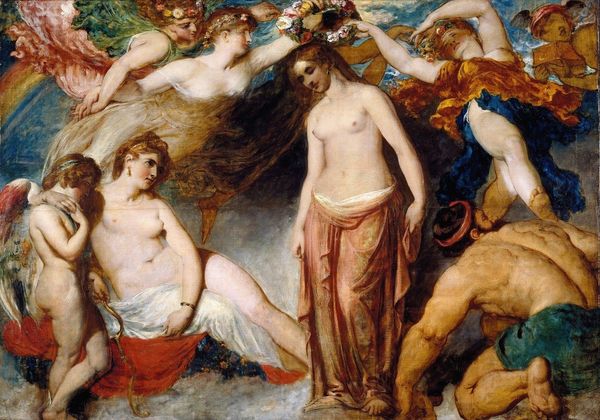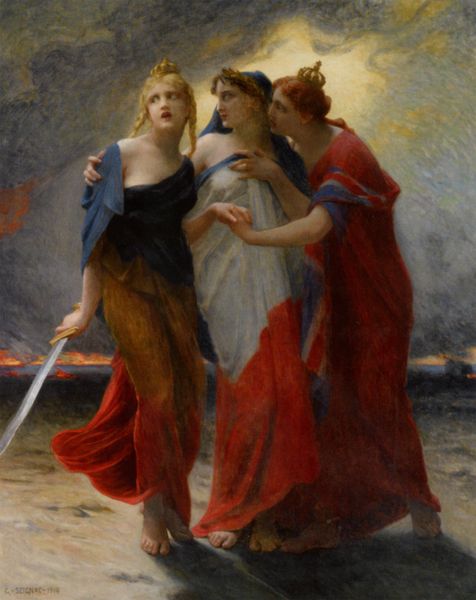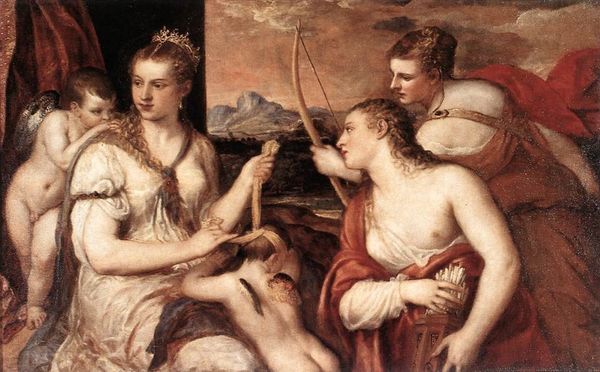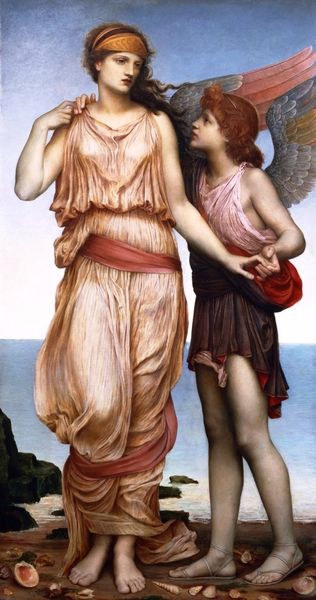
painting, oil-paint
#
allegory
#
painting
#
oil-paint
#
sculpture
#
figuration
#
oil painting
#
mythology
#
painting painterly
#
history-painting
#
academic-art
Copyright: Public Domain: Artvee
Curator: Hans Makart painted this striking scene between 1881 and 1884. It's an oil painting entitled "Allegory of the Law and Truth of Representation". The way it’s presented in this arch-like canvas lends it such gravitas. Editor: Yes, my first impression is definitely of grandiosity and formality, yet something about the central figure's gaze also evokes a kind of dreaminess or disconnect. It's not quite as authoritative as I’d expect. Curator: Interesting. I find that disconnection quite powerful. Given its historical context—think Vienna at the end of the 19th century, teetering on the edge of modernity and grappling with social upheaval—this almost wistful representation of Law and Truth is very telling. Editor: So, almost a premonition of sorts? Is that what you are suggesting? I understand that this artwork attempts to illustrate an age-old debate over how Law and Truth intersect with, and influence, artistic and social representation. Curator: Precisely. And look at the sculptural quality of the figures, almost as if Makart is playing with the idea of truth being not merely represented but constructed, chiseled into being, a sort of declaration. The juxtaposition with the very real shift of art patrons away from traditional depictions. Editor: Yes, these idealized figures remind us that the politics of beauty are never truly neutral, particularly when placed within official institutional spaces. Curator: I can’t help but think the allegory also questions our notions of capturing a 'truth' or presenting 'the Law' on canvas. Maybe the painter’s inner turmoil lies not in the success of its visual articulation but the mere possibility of that type of absolute representation. Editor: Absolutely, the composition—with its careful balancing of classical references, symbolic gestures, and sheer painterly ambition—makes you question its cultural significance in its era. But also prompts you to think about the institutional and intellectual role that artists played in its construction, Curator: A really captivating, layered experience. Thanks for your analysis. Editor: My pleasure. It’s these kinds of nuanced layers of history and introspection that transform how we perceive our engagement with the painting.
Comments
No comments
Be the first to comment and join the conversation on the ultimate creative platform.
